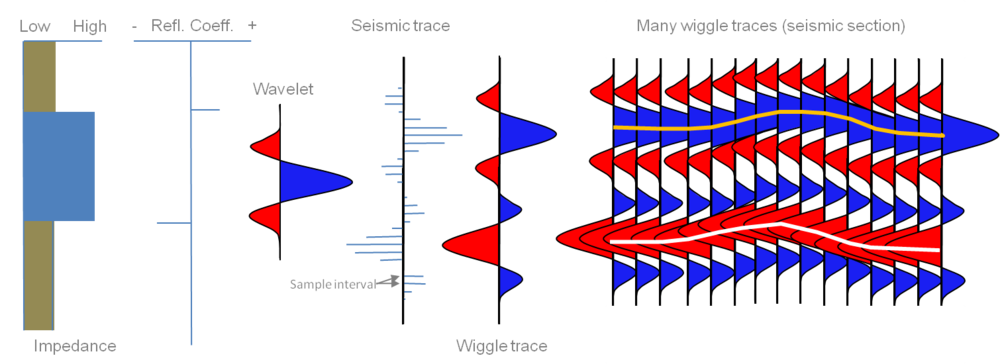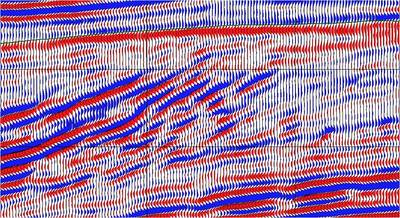A is for amplitude
/A seismic trace is a graph of amplitude versus time (Robinson & Treitel, 2008, Geophysical Reference 15)
Strictly speaking, amplitude is the measure of the displacement of a point along a seismic wave from the middle (zero crossing). Amplitudes can be positively valued (peaks) and negatively valued (troughs).
The amplitudes of seismic traces are often used to make a variety of geologic interpretations, either in 1D, 2D, or 3D and are often used in combination. Seismology is the imaging of the earth using seismic amplitudes (wave trains as a function of arrival time). Even though seismic amplitudes are not directly proportional to geological constrasts (expressed as reflection coefficients), there obviously is some connection. Big contrast = big amplitude, small contrast = small amplitude. Steve Henry has created a nice page that describes and summarizes many of the factors controlling seismic amplitudes.
Seismic traces are created by merging wave records from a range of angles, ray paths, and source and receiver positions. There is a large number of factors that affect seismic amplitude that have little to do with contrasts or geological interfaces. Here is a non-exhaustive list of things that might affect the amplitude of a seismic trace:
- Lithology
- Porosity
- Pore fluid
- Fluid saturation
- Effective pressure
- Faults and fractures
- Reflector geometry
- Bed thickness
- Random noise
- Acquisition footprint
- Interference
- Near-surface effects
- Processing operations
- Geometrical spreading
- Attenuation (energy loss)
- Multiple reflections
This display from the F3 Block seismic data set, offshore Netherlands, shows that the relationship between amplitude patterns and geology can be open to interpretation (lucky for us!). In this display, blue peaks represent a downwards increase in acoustic impedance. The data are available for free from the OpendTect Open Seismic Repository.
Traditionally, amplitudes are recorded in the field by converting mechanical wave motion into electrical energy (a voltage) using a geophone or a hydrophone. But typically seismic amplitude after processing is unitless and the magnitude is arbitrary. The precision, however, is important so next week we will look at what the interpreter needs to know about bit depth.











 Except where noted, this content is licensed
Except where noted, this content is licensed